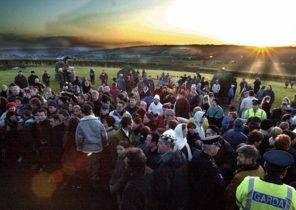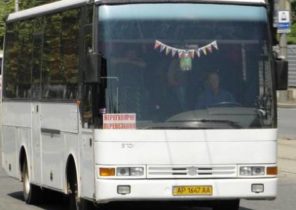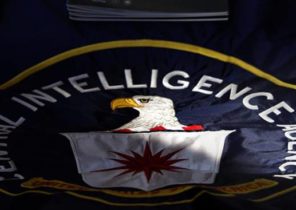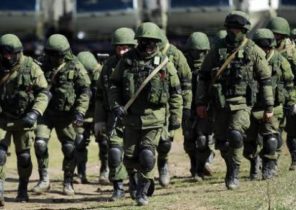
“I don’t think that “the Crimean question” will rise ever serious. Crimea, that is, completely “tied” to Ukraine, and its annexation by Russia — even hypothetically — just finish the Russian economy.” (E. Gaidar, “the Truth of Ukraine”, 1995).
All-Ukrainian referendum in 1991, carried out shortly after independence was held in Crimea, quite calmly and without any confrontation on the ethnic-political level. The turnout of 67.7% of the electorate, a positive answer to the question “do You Support the Act of proclamation of independence of Ukraine?” gave 54,2% of the Crimean people. In Sevastopol, the figure was even higher — 57%. Quite sensational was the results of the referendum on the black sea fleet. Of the 97% of the military, voting, 72% voted in favor of Ukraine’s independence, while 48% supported Leonid Kravchuk as President of the country.
Thus, the results of the first nationwide referendum clearly show that, despite many years of deliberate Russification of the local population, the Peninsula was left ukrainotsentrichnaya.
Separatist sentiments in Crimea among the population began to agitate aggressively chauvinistic forces in the Russian Parliament and they prepared the first Pro-Russian party and the extremist Russian public organizations of the Peninsula. Then arose the question of the revision of the Decree of the Supreme Soviet of the USSR of 1954 to transfer the Crimean region from the RSFSR to the Ukraine. Russian President Boris Yeltsin distanced himself from the alleged extremist statements in the Russian Parliament, but the presidential administration skillfully used this fact as a means of pressure on Ukraine by unfavorable distribution of the black sea fleet.
It was at this time in the previously quiet provincial Crimea under the influence of well-paid local Moscow chauvinistic partiek and puppet organizations increasingly began to be heard of the separatist slogans. One of the most popular of these was the myth of economic independence of the Peninsula, that of the Crimean people “robs the Kiev uncle” about the impending threatening “Ukrainization” and the dominance of the Ukrainians in Crimea. Among such marginalized part of the Crimean society has become a widely used expression “come in large numbers”. That is, when it was about the Ukrainians or the Ukrainian, the term aggressive Russians used to be the most compelling and damning-evidence argument. More often it was used by Bazaar traders, and older men with a military bearing and a Moscow accent. The vast majority of the Crimean population, burdened with daily chores and difficult life, remained calm, showing national-ethnic tolerance.
The offensive word “ponaehali” made me, krymchanin, which for this region in 60 years of living on the Peninsula did something useful to resort to finding a painful for me question: is it really in the Crimea, the Ukrainians have come after 1954 and seized power “primordially Russian land”? Objective response could be given only by the Crimean archives. They and the surviving local magazines retain unique materials on a large scale, forced relocation of the Ukrainian nation from 1944 to 1985. Economic motives, the extent of years of violent state action and its further consequences for the Crimea has been discussed and reported in the press.
It is my firm belief, based on reliable documentary evidence, that the transfer of Crimea from Russia to Ukraine, which took place in 1954, saved the Peninsula from economic and humanitarian disaster. Thanks to almost forcibly removed from mainland Ukraine to the Ukrainians and huge financial resources of the then USSR held a post-war revival of the Crimea. It is also true that in already restored, orderly and rebuilt the Crimea as the most attractive and comfortable for living region, 1970-1980 Russian “villages”, mainly from the middle of nowhere, “they come” hundreds of thousands “of patriots of the Russian land”. In large cities, especially in Sevastopol, this contingent consisted of retirees, former KGB officers and guards of the Stalin-Khrushchev’s Gulag. So exaggerated separatism “city of Russian glory” in the tragic days of February 2014 was not an unpredictable surprise.
If the legitimacy of the separatist’s favorite expression was “come” after 1954 we have seen, there is another unexplained question: who restored twice devastated and drained Stalin-Beria’s criminal genocidal deportation of Crimea? Indeed, in 1944, on the Peninsula there are not more than 500 thousand people, mostly elderly and children. “True Russian patriots” and for this reason say that the first burden in overcoming the economic difficulties and destruction took over the migrants from Russia.
Indeed, the Kremlin initially wanted after eviction of the Crimean Tatars and other peoples to settle in Crimea by the Russians. Already was the first attempt to colonize attractive, the most beautiful areas of the South coast predominantly ethnic Russian population. But it is because of the significant natural differences and different ideology of management of these lands in most cases not caught on and fled their homes, like cockroaches. The new place has been steadily late immigrants from the North Caucasus (Krasnodar Krai and Stavropol). Among them were mostly ethnic Ukrainians. Then I got the idea from the Kremlin philosophize to relocate to the Crimea for its revival of the residents of mainland Ukraine.
When I worked in the Crimean archives, studying the processes of resettlement of Ukrainians in the Crimea during the 1954-1985 years, met there only a few materials on the facts of the resettlement of the Ukrainian population, even when the Peninsula was part of Russia. Wanted to dig more and Kyiv archives, but such a possibility did not happen. Being in “exile” in my hands were Ukrainian, thick, printing work, a compilation of documents and materials “Crimea in the conditions of social-political transformations” (Kiev, OOO publishing house “Clio”, 2016). It was prepared by the staff of Kyiv scientists under the leadership of A. G. Bazhan.
This work saved my time. In the documentary materials I found the answer to your question. Largely they confirmed my previous assumptions.
So, after devastating for the Ukrainian lands of the Second world war (on our earth it is double-rolled), after a multi-million Ukrainian population losses from the famine and another fresh war the Kremlin authority, violating even the Soviet Constitution with the tacit consent of the little Russian lackeys began the mass deportation of the Ukrainian population in another country. This is further evidence that as the Federal and Republican Constitution for the totalitarian Soviet regime was just a window dressing and a Fig leaf for countries.
A year after the liberation of the Peninsula from Nazi occupation and three months after the deportation of Crimean Tatars, the Council of people’s Commissars of the Ukrainian SSR and the CC KP(b)U to execute the orders of the Kremlin adopts a decision “On resettlement of collective farmers in the Kuibyshev district of the Crimean Autonomous Soviet socialist Republic”. To prevent allegations of distortion of facts and bias of the actual material, we quote the preambular part of the Resolution: “pursuant to the resolution of the State Committee of Defence, from 12 August 1944 to No. 6372с “On resettlement of collective farmers in the districts of Crimea” to oblige the Executive committees of regional Councils and the regional committees of the CP(b)U Vinnytsia, Zhytomyr, Kyiv, Kamianets-Podilskyi (now Khmelnytskyi), Sumy, Chernihiv, and Poltava regions to move before October 1, 1944, in Kuibyshev (now Bakhchisarai) district 3 thousand households (9 thousand people). The following are pooblastila the list of households and number of persons. Most under the relocation fell farms in Vinnytsia, Kamianets-Podilskyi, Zhytomyr regions (600, 500 farms). Subject to planned relocation to them from 1 thousand 500 to 1 thousand 800 people. Together with farmers under the resettlement fell 41 Chairman of the collective farm, 32 head of the village Council, 40 teachers, 3 doctors, 20 combiners, 60 tractor operators, 4 mechanics, 8 agronomists and animal science 4.
Another item on the criminal decision was required “to select a conscientious and hardworking farmers, first and foremost familiar with the horticulture, viticulture and tobacco growing, able to quickly master the fertile land of the Crimea”, and in each intended for the resettlement of the family must be at least 2 able-bodied. Deliberately did not touch the material-legal rights and responsibilities of immigrants. About them needs to be a separate conversation. Note that the decree provided for such a weighty thing: “Land of the former (Tatar, Bulgarian and other evicted farmers who had crops and plantations) is transmitted to the newly organized collective farms which settled farmers-settlers and are fixed on the ground for farmers in perpetuity”.
Very interesting and immoral decision of the Kremlin looters to have a significant benefit from the sale of property of the deportees (special settlers). They were obliged local authorities to sell to the migrants from Ukraine is not only agricultural equipment, but also household items owned by the settlers. After reading this criminally immoral document it becomes clear the vitality of the negative attitude of certain part of the Crimean society to the return of the Crimean Tatars and other deported peoples in Crimea. This syndrome is Communist-chauvinist power in the Crimea, imposed decades. To a certain extent the answer to these moral flaws give some items of the specified resolution:
— Family farmers, migrating to the Crimea, filled with houses that have outbuilding and gardens;
— Houses and outbuildings, transferred to the collective farmers-migrants, cannot be sold by them or leased. The buildings transferred to their personal property after five years of continuous work in the farm.
Other interesting aspects of the resettlement of the Ukrainian population in Crimea until 1954, and I hope will be covered in other publications.







